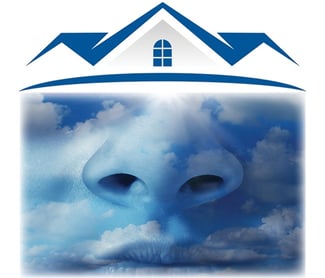 Over the past 20 years or so there has been an increasing interest in building homes that are easier on the environment. We’ve thought about it a lot ourselves and have even written about it on occasion.
Over the past 20 years or so there has been an increasing interest in building homes that are easier on the environment. We’ve thought about it a lot ourselves and have even written about it on occasion.
Much of what’s been said and done in the area of creating environmentally friendly homes, however, has focused on the environment outside your home. It’s also important to consider why indoor air quality matters for our homes because we spend so much time indoors. According to the Environmental Protection Agency (EPA) some reports indicate that we spend as much as 90 percent of our time indoors—when you take our working hours into consideration.
While that in itself is not terribly surprising, there is increasing scientific evidence that the air we breathe inside may be more toxic than outdoor air—even in large, industrialized cities. So what are some of the sources of this inside air pollution? How can it affect you? And what can you do about it?
Some of the biggest culprits (in general terms) include: toxic household products, inadequate ventilation, and high humidity. Let’s take a look at a few specific examples.
- Asbestos is a major indoor pollutant. Although asbestos is no longer used in home construction (it was banned for that purpose in the U.S.), there are older homes that still have quantities of asbestos in the coatings, paints, building materials, and ceiling and floor tiles. Asbestos can cause serious health problems such as lung cancer, asbestosis, mesothelioma, and other types of cancers.
- Radon can exist in the bedrock underneath your home. It’s odorless, so you can’t detect it without equipment. It seeps in through your foundation. Evidence shows a clear link between high concentrations of radon and lung cancer. In fact, it is second only to cigarette smoking in lung cancer deaths in the U.S.
- Lead is another pollutant health hazard. Most of the occurrences of lead in homes come from lead-based paints. Those paints were banned in the U.S. in 1978, but older homes sometimes have remnants of lead-based paints in them. According to the World Health Organization lead affects multiple body systems (it is distributed to the brain, liver, kidney and bones) and is particularly harmful to young children.
- Household Chemicals, especially those used in certain cleaning agents and paints can cause you to experience a loss of coordination, liver, brain, and kidney damage, as well as a number of types of cancer.
So what can you do about these potential problems? If you’re building a new home, you’ll want to talk with your builder to make sure there’s adequate ventilation, discuss the use of low-emitting building materials and furnishings, and inquire about using radon-resistant construction techniques.
If you live in an older existing home (particularly a home built before 1978) you may want to have it evaluated for the existence of asbestos or lead paint. And you may want to have your basement or crawl space evaluated for radon. Then you’ll want to work with a reputable builder to correct those issues.
When it comes to your home, you really want it to be “environmentally healthy” inside and out. Sure, you want to take care of the gorgeous Poconos environment around you, but you also need to keep an eye out for the air quality inside your home, so that it remains a place that’s comfortable and safe for you and your loved ones.







